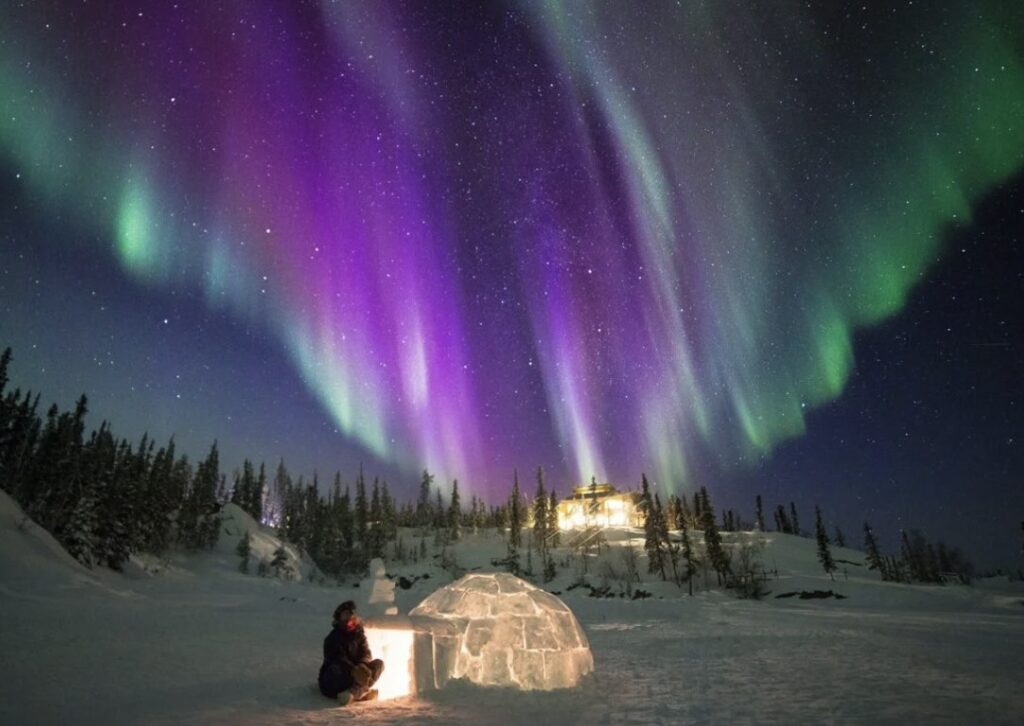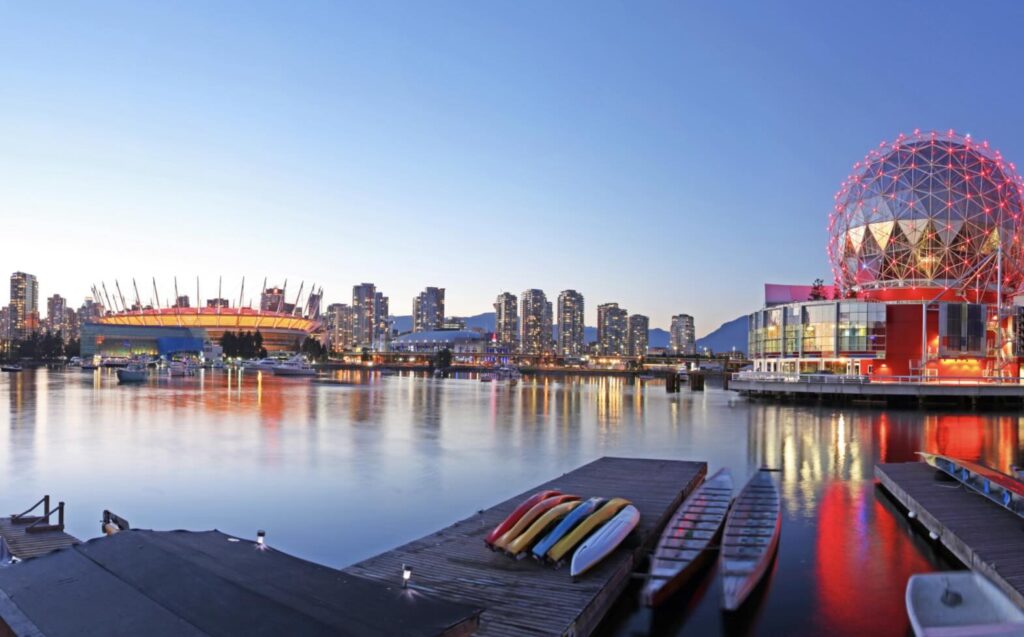North America, a vast landmass that stretches across the hemisphere, houses an intricate web of cultures, topographies, and histories. At the heart of this narrative is Canada, a nation firmly rooted in the fabric of this continent. It’s not merely about geographical location or political boundaries but a reflection of the nation’s collective journey and culture.
This discourse will explore the geographical terrain of the North American landmass, the historical odyssey leading to nation formulation, and the cultural elements that forge a shared identity. Special attention will be given to Canada’s position and contribution within this complex collage, reinforcing the understanding of its intrinsic inclusion in North America.
Table of Contents
- Understanding Geographical Zones
- Historical Insights
- Cultural Connections
- Related Questions
- Related Questions
Understanding Geographical Zones
The Great Canadian Adventure: Embracing the Majesty of North America
Ready your knapsacks, adventurers, dust off your wilderness maps, and let those adventurous spirits take flight as we delve into one of the earth’s grandest spectacles – Canada!
Perched on North America’s northernmost part, Canada embodies North America’s charm, offering a mosaic of lush landscapes, dazzling cities, and awe-inspiring wilderness. Undoubtedly, the geographical position of Canada in the North American continent has a sublime knack for attracting exploration enthusiasts worldwide.
And for good reason! As the larger of the two countries within North America, spanning from the Atlantic to the Pacific, Canada is a testament to Mother Nature’s most divine masterpiece. With the United States kissing its southern edge, Canada proudly wears the crown as the second-largest country in the world, boasting vast lands brimming with history, culture, and ecotourism.
Imagine being warmly greeted by the rosy-fingered dawn as it peaks over the edges of Newfoundland and Labrador’s rugged coastline on the east. She was then journeying across six different time zones while being swept up in a flurry of urban vibrancy, plateaus, verdant forests, crystal-clear lakes, and finally witnessing the sun’s farewell kiss on the pristine shores of the westernmost British Columbian coast.
But it’s not just about the vast landscapes. Canada’s geographical placement grants it an enviable collection of climate zones. Canada indeed includes a world within a world, from the warm, temperate rainforests of the British Columbia Coast to the subarctic climes of the territories to the North. It’s as if every day in this incredible land is spent hopping from one place to another, each as enchanting as the last.
And there’s more! Thanks to this fantastic location, Canada is a celestial showcase, the best seat in the house for nature’s most spectacular show – The Northern Lights. This dramatic, natural planetarium can be witnessed in northern Canada, underlining Canada’s magical experience.

Canada has a story written in every inch of its monumental landscape. From the east coast to the west, from its southern border to the Arctic north, the diverse geography of Canada opens the door to limitless exploration and adventure.
All it takes is a leap of faith, a dash of wanderlust, and a desire to see what lies beyond the horizon. So, why wait? Grab that passport, hiking boots, and a tent and set on a journey to explore the charming terrains of Canada. Happy Traveling, adventurers!
Historical Insights
Unlocking the Memories of Canada: An Odyssey from Coast to Coast
Picture it: A vast country that huddles to the North of the American continent, an abode of vibrant cities with a rich past, stretching coastlines, rugged mountains, and serene forests. Yes, we’re talking about Canada, the country that shares its history as the thread that ties it to North America.
Tracing back 24,500 years ago, Canada’s earliest inhabitants crossed the Bering Strait from Siberia. You may not see wooly mammoth hunters when you visit, but evidence of their presence remains. Catch a glimpse of the ancient migration routes and indigenous history at national parks like Banff and Jasper.
For those of you drawn to all things historical, let us start our journey in Quebec, the hub of early European settlements. Old Quebec, a UNESCO World Heritage site, invites you to walk down its cobblestone streets and soak in the grandeur of Château Frontenac. The lengths of time whisper to you from its fortified walls.
Fast forward to the reign of New France. Under French rule, Canada experienced a fusion of cultures, traces of which are present today. Montreal’s historic district, Vieux-Montréal, carries the charm of New France in its old port and narrow lanes.
Canada’s history takes a critical turn with the British conquest. The Seven Years’ War struggles and significant events like the Battle of the Plains of Abraham bring history buffs to Ontario upon bucket loads. In these fringes of Canada, you feel the power of history, laced with tales of alliances, struggles, and the eventual British victory.
Don’t miss out on Ottawa, Canada’s capital. Walk around Parliament Hill and its surrounding historical sites and connect with Canada’s political history. This city’s got an infectious undercurrent of energy that whispers stories of a one-time wild logging town turned grown-up government city.
Explore Canada’s far west, where the Gold Rush of 1850 paints a raw, vibrant picture. Dawson City’s colorful buildings, gravel streets, and wooden boardwalks vividly reflect the wild frontier days.
In the contemporary era, Toronto, Canada’s most populous city, offers a modern take. Yet it retains its historical roots at the Royal Ontario Museum and the Distillery Historic District.
Our brief journey does no justice to this country’s deep-rooted history. But it offers a snapshot of Canada as an intertwined part of North America’s history. Canada’s rich history is as diverse as its landscape, from British Columbia’s ancient forests through the French-speaking cities of Quebec to cosmopolitan Toronto.
Remember, history is something that must be experienced. Canada, with its unique tapestry of the old and the new, the wild and the urban, is waiting to share its stories with you. So turn up the music, hit the road, and watch history come alive.

Cultural Connections
Journey with us as we delve deeper into the Canadian culture’s remarkable alignment with North America. You’ll realize that although Canada is distinct in many ways, a comforting sense of familiarity bonds it to the rest of North America.
Diving straight into it, let’s talk about languages. English and French are the official languages in Canada, just as English and Spanish are prevalent in other parts of North America. This multilingual culture symbolizes Canada’s rich history and inclusivity and aids in forging more robust communications with neighboring countries.
Moreover, Canadians are renowned worldwide for politeness, and courtesy is deeply woven into their culture, arguably more than in other North American societies. It’s just one example of their deep-rooted values, which mirror American ideals of freedom, fairness, and respect for all.
Moving on, Canada’s thriving arts scene is another common thread that unites it with the North American cultural fabric. From the vibrant film festivals in Toronto to the jazz fests in Montreal, Canadians possess a deep appreciation for arts and entertainment, much like their American counterparts. Additionally, indigenous art, with its unique depictions of Canada’s natural beauty and history, boasts an intriguing parallel to Native American art.
What’s North America without a sports obsession, right? Although hockey is undeniably Canada’s national sport, the country shares the rest of the continent’s love for basketball, baseball, and American football, fostering a sense of camaraderie and shared excitement across borders.
In the culinary universe, poutine might be quintessentially Canadian, but the cultural love for fast and comfort food is something Canada shares with most North American countries. The love for barbeques, fries, burgers, and different cuisines worldwide denotes a shared gastronomic indulgence and experimentation tradition.
Education is another area where the Canadian culture mirrors that of North America. Emphasizing inclusivity, diversity, and quality, the Canadian education system, much like its American counterpart, promotes critical thinking and fosters innovation.
To highlight socio-political aspects, Canada’s democratic values deeply resonate with those of other North American nations. The standard of living, multiculturalism, and societal openness echo the larger North American ethos.
In a nutshell, Canada’s culture isn’t in isolation; it’s a beautiful blend of influences, values, history, and innovation, reflecting a rich tapestry of North American diversity.
So, whether you’re planning your next adventure or simply expanding your world knowledge, remember – Canada isn’t just a vast, beautiful land of ice and snow; it’s a fascinating piece of the North American cultural puzzle.

By exploring geography, history, and culture, we can profoundly understand the intricate ties that bind Canada to North America. It’s not merely a matter of physical land but the interweaving of timelines, the crisscrossing of cultural narratives, and the amalgamation of shared experiences that solidify Canada’s place within this continent.
The evidence is imprinted in the varied landscapes, echoed through historical events, and alive within vibrant traditions and shared cultural norms. As we evaluate these dimensions, we can draw the undeniable conclusion: Canada is, indeed, an integral part of North America at every level, from geographical to historical, from physical to cultural.
At A Bus On A Dusty Road, we talk about travel, life, and ex-pat living. We are all about “Living Life As A Global Citizen.” We explore social, cultural, and economic issues and travel.
We would love to have you be part of our community. Sign up for our newsletter to keep up-to-date by clicking here. If you have any questions, you can contact me, Anita, by clicking here.
Listen to our Podcast called Dusty Roads. You can find it on all major podcast platforms. Try out listening to one of our podcasts by clicking here.
Subscribe to our A Bus On A Dusty Road YouTube Channel with great videos and information by clicking here.
Related Questions
Related Questions
Are Hmong People And Mongol People Related?
The Hmong people are from China and have migrated to southeast Asia, mainly Vietnam, Laos, Thailand, and Myanmar (Burma). The Mongols, also known as Mongolians, live primarily in Inner Mongolia (China) and Mongolia. The Hmong mainly live in the mountains, whereas the Mongols are nomadic herders.
By clicking here, you can discover Are Hmong People And Mongol People Related?
What Happened To The Hmong After The Vietnam War?
When the Vietnam War ended, the Hmong in Laos was in a terrible position; the Hmong fighters were enemies of the present Laotian government and considered “persona non gratis.” Some were forced into labor camps or kicked out of their home and lands. The Hmong eventually made their way to the Laotian – Thai border to try to get into the United States via Thailand.
By clicking here, you can discover What Happened To The Hmong After The Vietnam War?
Are Miao And Hmong The Same People?
Miao is a Chinese term used for the ethnic hill tribes that are Hmong, Hmu, Qo Xiong, and A-Hmao people. If someone says they are Miao, you can not automatically assume they are Hmong as they could be one of these four ethnic classified groups.
By clicking here, you can learn more by reading Are Miao And Hmong, The Same People?

